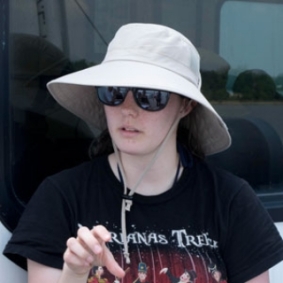Eight students will be presenting the summer work at the Ocean Sciences Meeting in March 2022!
Caroline Schkeeper, Richard Stockton College
Class Year:
2014Mentor:
Laura Lapham, Ph.D.Project Title:
Method Development for Field Measurements of Water-Air Methane Flux in Relation to Invasive Species Phragmites australis
Abstract:
Methane is sequestered in coastal wetlands and estimates suggest that 16% of total methane emissions each year come from these ecosystems. While methane is formed under anoxic conditions in the sediment, it can be released into the atmosphere by traveling through plant stalks. Mozdzer and Megonigal (2013) found in laboratory mesocosms that invasive Phragmites australis has a higher potential to release methane into the atmosphere compared to native Phragmites. As the biomass of invasive Phragmites increases, it is hypothesized that the methane flux would be higher where these plants are found. A method was developed to measure water-air methane flux in an invasive population of Phragmites and a population of Typha latifolia at Cove Point, a coastal wetland in Maryland. During flux measurements, an area of water was covered with a flux chamber, and air samples were taken at discreet times over a fifteen or thirty minute period. Results showed that invasive Phragmites (94.5±50.2 ppm/m2/min) had a higher flux than Typha (3.8±2.75 ppm/m2/min). Including all sites, it was observed that methane flux was variable (31.3±47.6 ppm/m2/min). Due to this high variability, it was concluded that the method employed was too short to capture the full flux rate. Therefore, it is recommended that the method is tested during initial field campaigns to verify that the time series is long enough.



